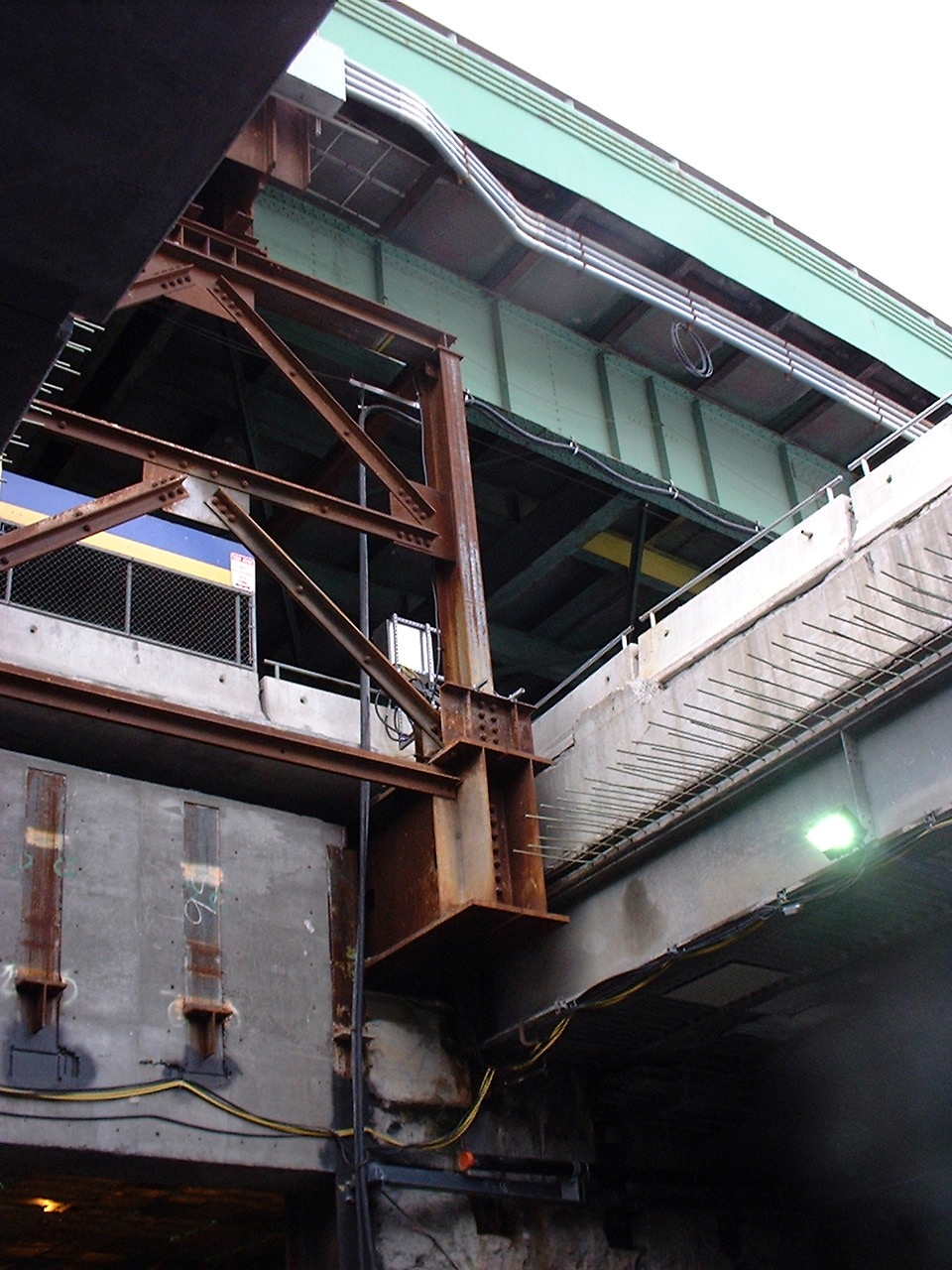 Living in Massachusetts, one topic related to transportation engineering that has always been of great interest to me is the Boston Central Artery/Tunnel Project, more commonly known as the Big Dig. Completed in 2007 after 25 years of planning and work, the primary purpose of this massive project was to move the Central Artery (Interstate 93) from an elevated highway to a tunnel under the city of Boston. Costing in excess of $14 billion, it is the most expensive highway project in US history, and its cost will likely continue to rise as a result of flaws in construction.
Living in Massachusetts, one topic related to transportation engineering that has always been of great interest to me is the Boston Central Artery/Tunnel Project, more commonly known as the Big Dig. Completed in 2007 after 25 years of planning and work, the primary purpose of this massive project was to move the Central Artery (Interstate 93) from an elevated highway to a tunnel under the city of Boston. Costing in excess of $14 billion, it is the most expensive highway project in US history, and its cost will likely continue to rise as a result of flaws in construction.
The Need
The Big Dig was created to solve the problem of extreme traffic congestion on the Central Artery. The elevated highway, constructed in 1956, was initially designed to carry 75,000 vehicles per day. By the early 1990s, it carried over 200,000 vehicles per day, resulting in massive traffic jams. It was estimated that if no changes were made, the central artery would experience 16 hours per day of stop and go traffic. Additionally, the overloaded elevated highway was not aesthetically pleasing and contributed greatly to air and noise pollution in the city. Clearly, the need for change was great.
The Obstacles

In order to make the project a success, many different issues had to be considered. Hundreds of traffic studies had to be performed to ensure that the new construction could handle both current demand as well as the increased loads that would be present in the future. Traffic speed and behavior had to be carefully analyzed to ensure safety and efficiency in the tunnels, in addition to careful consideration of the role of mass transportation within the new transit system. The environmental impact of the project also had to be carefully considered and offset where necessary. By far the greatest challenges came with the actual construction however. The whole project had to be completed without closing the central artery, disrupting the city of Boston and its related services, or interrupting the numerous other transportation systems in the area. Additionally, the historic nature of the construction area required special considerations when artifacts or other features where discovered. State of the art construction techniques such as slurry-wall construction and artificial ground freezing had to be employed to ensure success of the project.
The Result
The Big Dig is far from perfect. It was completed 9 years late and $8 billion over budget. Additionally, the infrastructure has suffered from myriad of problems such as sub-standard concrete failures, tunnel leaks, a fatal ceiling collapse, and the deterioration of light fixtures, wall panels, and other metal hardware. Still, there have been many benefits as a result of the project. Traffic congestion has been decreased by as much as 60%, along with significant decreases in air and noise pollution in the city. The space previously occupied by the elevated highway has been replaced with an urban park system, increasing quality of live and providing a venue for public art. The creation of more mass transit has decreased emissions in some areas and allowed for increased expansion of the city. While far from perfect, the Big Dig is a fascinating case of how transportation engineering can have a massive effect on the everyday lives of people.

Interesting Facts and Figures
Copied from http://www.massdot.state.ma.us/highway/TheBigDig/FactsFigures.aspx
Traffic
- The elevated Central Artery had just six lanes. The new underground expressway has eight to ten lanes.
Dirt
- The project excavated a total of 16 million cubic yards of dirt, enough to fill a stadium to the rim 16 times.
Concrete and steel
- The project placed 3.8 million cubic yards of concrete, enough to build a sidewalk three feet wide and four inches thick from Boston to San Francisco and back three times.
- Reinforcing steel used in the project would make a one-inch steel bar long enough to wrap around the earth at the equator.
First, most, biggest
- The project’s seven-building ventilation system is one of the largest highway tunnel ventilation systems in the world.
- The Leonard P. Zakim Bunker Hill Bridge is the widest cable-stayed bridge in the world and the first hybrid and asymmetrical design in the United States, using both steel and concrete.
- The project included the largest geotechnical investigation, testing and monitoring program in North America. The purpose was to identify conditions in the path of tunneling work, and help prevent buildings from settling during the digging.
Parks and open space
- The project created more than 300 acres of new parks and open space, including 27 acres where the existing elevated highway stood, 105 acres at Spectacle Island, 40 acres along the Charles River, and 7 acres as part of an expanded Memorial Stadium Park in East Boston.
- More than 2,400 trees and 26,000 shrubs were planted at Spectacle Island. Another 2,400 trees and more than 7,000 shrubs were planted downtown.
Environment
- Because of the new highway system, Boston’s carbon monoxide levels dropped 12 percent citywide.
Sources:
- http://www.massdot.state.ma.us/highway/TheBigDig.aspx
Images:
- http://en.wikipedia.org/wiki/File:Mhs_logo.png
- http://en.wikipedia.org/wiki/File:BigDigSupportsCentralArtery.agr.jpg
- http://en.wikipedia.org/wiki/File:Boston-big-dig-area.png

One important thing is that if you find yourself searching for a student loan you may find that you will need a cosigner. There are many situations where this is correct because you should find that you do not use a past credit ranking so the financial institution will require that you’ve someone cosign the financial loan for you. Good post.